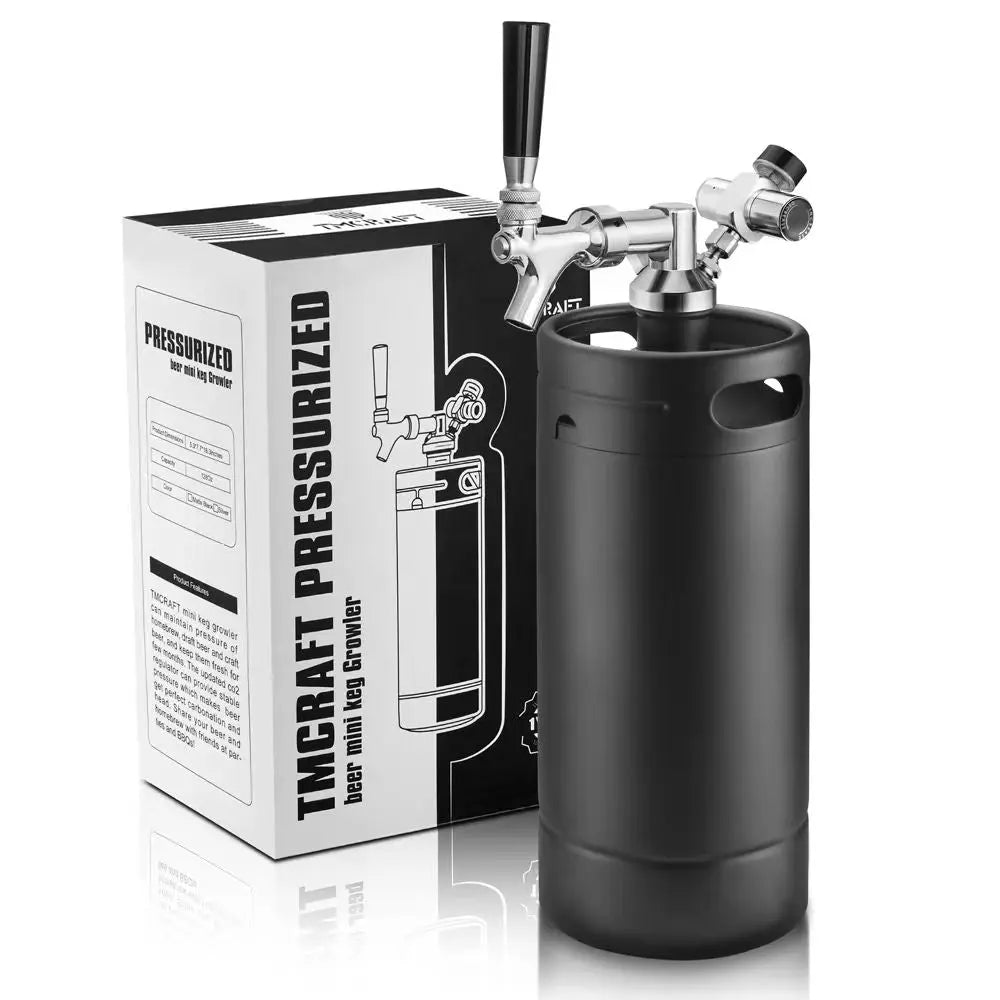Troubleshooting Your Ball Lock Keg: Fix These 5 Common Issues Fast
 For homebrewers, few things are more frustrating than a keg that won’t pour right, leaks CO₂, or fails to hold pressure. The ball lock keg is a favorite among brewers because of its reliability and ease of use, but like any equipment, it can run into issues if not properly maintained. The good news? Most problems can be fixed quickly with the right know-how.
For homebrewers, few things are more frustrating than a keg that won’t pour right, leaks CO₂, or fails to hold pressure. The ball lock keg is a favorite among brewers because of its reliability and ease of use, but like any equipment, it can run into issues if not properly maintained. The good news? Most problems can be fixed quickly with the right know-how.
In this guide, we’ll walk through five common ball lock keg issues, how to troubleshoot them, and why investing in a TMCRAFT Ball Lock Keg can help prevent these problems in the first place.
1. CO₂ System Not Holding Pressure
The Issue: Your keg loses carbonation quickly, or the CO₂ regulator fails to maintain proper pressure.
Quick Fix:
- Check for leaks by spraying soapy water on all connections (look for bubbles).
- Inspect the O-rings on the posts and lid—they may need replacing.
- Ensure the regulator is functioning correctly and hasn’t been damaged by impact.
Pro Tip: Keep spare O-rings and gaskets on hand for quick repairs.
2. Beer Leaks from the Keg Lid
The Issue: Beer seeps out from the lid seal during carbonation or pouring.
Quick Fix:
- Make sure the lid is seated correctly and the O-ring is lubricated with food-grade lubricant.
- Replace worn or cracked O-rings.
- Apply a slight bump of CO₂ pressure (30 psi) to help the lid seal properly before serving.
3. Tap System Pouring Foamy Beer
The Issue: Excess foam when pouring can ruin the drinking experience.
Quick Fix:
- Ensure the beer is properly chilled (warm beer foams more).
- Reduce serving pressure to 8–12 psi for most beers.
- Check beer lines for kinks or excess length that can cause turbulence.
4. Stuck or Clogged Posts
The Issue: Beer or gas posts are difficult to connect or won’t release properly.
Quick Fix:
- Clean the posts and poppets thoroughly to remove dried beer or debris.
- Replace any damaged poppets that no longer seal.
- Regularly sanitize after each use to prevent buildup.
5. Flat Beer After Kegging
The Issue: Your beer tastes under-carbonated even after a few days in the keg.
Quick Fix:
- Check CO₂ pressure settings—force carbonation usually requires 20–30 psi for 24–48 hours.
- Shake or rock the keg gently to help dissolve CO₂ faster.
- Ensure the keg lid is fully sealed and the CO₂ tank is not empty.
Why TMCRAFT Ball Lock Kegs Minimize These Problems
While regular keg maintenance is essential, choosing the right equipment makes troubleshooting far less frequent. TMCRAFT Ball Lock Kegs are designed with durability and ease of use in mind:
- High-Grade 304 Stainless Steel – Rust-resistant and built to last.
- Reliable Seals and Posts – Minimize leaks and ensure consistent performance.
- Easy to Clean & Maintain – Simplified disassembly for quick maintenance.
- Compatible with Standard CO₂ Systems – Seamless integration with your homebrewing setup.
By upgrading to a TMCRAFT Ball Lock Keg, you can avoid many common issues and enjoy smoother brewing sessions.
✅ Final Thoughts
Troubleshooting a ball lock keg doesn’t have to be stressful. With regular cleaning, proper CO₂ management, and attention to seals and fittings, most problems can be fixed in minutes. For brewers who want long-term reliability, investing in quality gear like TMCRAFT Ball Lock Kegs ensures fewer headaches and more perfectly poured pints.

